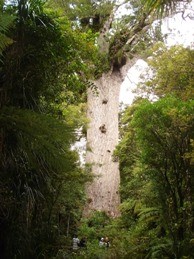Boyd
|
One of the most famous ships in pre-colonial New Zealand history, the Boyd, its crew, and passengers were attacked by Maori in December 1809 in Whangaroa Harbour. Captain Thompson had brought the vessel into the harbour looking for timber for spars. They’d come from Sydney and had on board Te Ara, a young chief, who had been flogged and deprived of food when he hadn’t followed orders to work his passage home. On reporting this insult, his people resolved to extract utu (revenge), on the ship’s captain and crew.
When Captain Thompson went ashore with some of his men to inspect the ancient Kauri trees, they were set upon, killed, and eaten. Later that day a group of Maori approached the ship and were joined by others that had been waiting nearby in waka (canoe), for the signal to be given. They climbed aboard the ship, attacked, and murdered most of the 70 crew and passengers. A few crew escaped the massacre by climbing into the ship’s rigging where they remained all night. Fortunately for the terrified survivors, a Bay of Islands chief, Te Pahi, who traded frequently with Europeans and had visited Sydney, arrived at Whangaroa while they were still clinging to life in the tops of the captured ship. Te Pahi was dismayed by what he found and immediately tried to save them. He succeeded in loading them into the safety of his waka. It was to be but a brief reprieve. |
As soon as he reached shore the local Maori, who considered it not Te Pahi's place to intervene, attacked the survivors and murdered them. The ship was towed further up the harbour. As was custom, it was pillaged and its cargo taken away. During this, a supply of gunpowder caught alight with a massive explosion. Many Maori died and Boyd was burnt down to the waterline. A few Europeans survived the massacre and ship’s burning, including a woman and her two year old daughter. Also a ship’s boy called Tom, and a member of the crew. This man was instructed to make fish hooks. When his work was finished he was killed and eaten.
Eventually Ann Morley, her baby girl, and the ship’s boy were rescued by Europeans with the help of a chief, but it was too little too late for the rescuing sailors and their captains. They had their own form of retribution in mind and word spread among European shipping. A few months later six whaling ships, with around 200 men, launched a retaliatory attack on a native village of innocent people. The attack was mistakenly directed at the home of Te Pahi, the chief who had tried desperately to save the survivors after Boyd was taken. Many of his people were killed and Te Pahi himself died of wounds sustained in a war that was triggered by the whalers attack.
After the burning of the Boyd, the increasing number of ships arriving in New Zealand ground to a halt as word of the attack spread fear among captains and crew. Several months later many more innocent people died when whalers retaliated by destroying a village in the Bay of Islands.
Eventually Ann Morley, her baby girl, and the ship’s boy were rescued by Europeans with the help of a chief, but it was too little too late for the rescuing sailors and their captains. They had their own form of retribution in mind and word spread among European shipping. A few months later six whaling ships, with around 200 men, launched a retaliatory attack on a native village of innocent people. The attack was mistakenly directed at the home of Te Pahi, the chief who had tried desperately to save the survivors after Boyd was taken. Many of his people were killed and Te Pahi himself died of wounds sustained in a war that was triggered by the whalers attack.
After the burning of the Boyd, the increasing number of ships arriving in New Zealand ground to a halt as word of the attack spread fear among captains and crew. Several months later many more innocent people died when whalers retaliated by destroying a village in the Bay of Islands.
Books you might like
